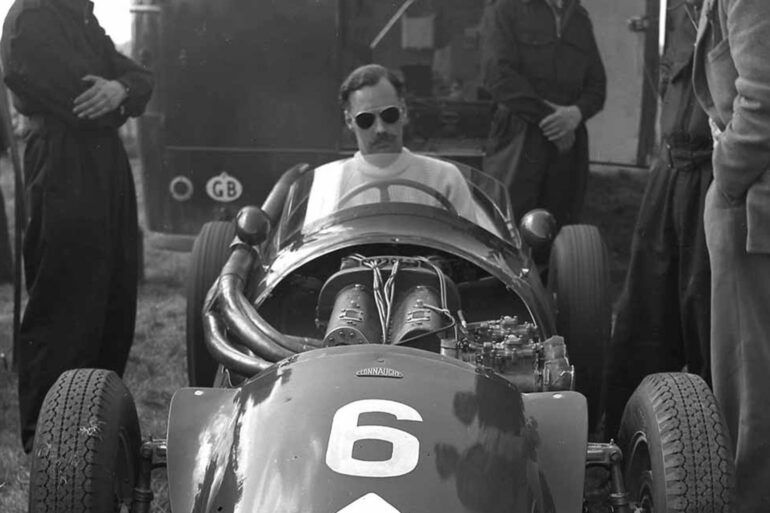In the 1950’s Archie Scott Brown was held in high regard in his chosen field as a sports car racing driver and Formula 1 competitor, but today his name is not widely known – not least in his hometown of Paisley.
Five times Formula 1 world champion, Juan Manuel Fangio, a contemporary of Scott Brown, described him as a “phenomenal driver with uncanny car control”.
This was the era of racing car legends like Stirling Moss and Jack Brabham. The tragic events which unfolded at the sports car race on 18 May 1958 at the Spa-Francorchamps track in Belgium ended with the death of Scott Brown as his car sped off the track, somersaulted before hitting the ground and bursting into flames.
Archie Scott Brown’s life was an amazing journey not least as he overcame severe physical disability to compete at the highest level in motor racing and earning the respect of his contemporaries and the wider public.
Born William Archibald Scott Brown on 13 May 1927 in Paisley. He was the only child of William and Jeanette Scott Brown. His mother contracted Rubella (German Measles) during pregnancy, and he was born with severe physical disabilities. Throughout his childhood Scott Brown underwent many painful medical procedures and operations. He had no right forearm or hand and his legs were shortened, his full height being no more than five feet. Despite these disabilities Scott Brown went on to learn to drive and discover his talent for racing. To finance his racing career Scott Brown also worked as a travelling salesman for Dobies 4 Square tobacco, the cigarette factory for this firm being based in Paisley.
Scott Brown’s first competitive race was in 1951 racing his own MG Roadster sports car. This got him noticed and his career flourished during his association with the racing sports car manufacturer of Listers based in Cambridge. He drove the Lister Tojeiro special and the Lister- Jaguar model often known as the Lister “Knobbly.” In a short competitive career Scott Brown won seventy-one races including fifteen international wins. All of this was achieved against a backdrop of having to challenge assumptions and questions of ability to drive in a competitive situation faced by Scott Brown and related to his physical disabilities.
During the race on 18 May 1958 at the Spa-Francorchamps track in Belgium, spectators were thrilled by the competition for the lead between Scott Brown and his rival American driver Masten Gregory. It had been raining that day and the track and the circuit bends contained patches of wet and dry surfaces. Scott Brown took the lead in the sixth lap of the circuit. Approaching the “Clubhouse” bend – a known blackspot where in previous years a driver had lost his life in a crash – Scott Brown’s car slide across the wet track surface, clipped a road sign which snapping the right side track rod in the race car and in an instant Scott Brown’s car was catapulted across the track at high speed, spinning out of control and bursting into flames on impact with the ground. Scott Brown was thrown from the vehicle but had sustained severe burns. He was taken to Heusy Hospital where he died from to his injuries the following day. He was just thirty-one years old.
